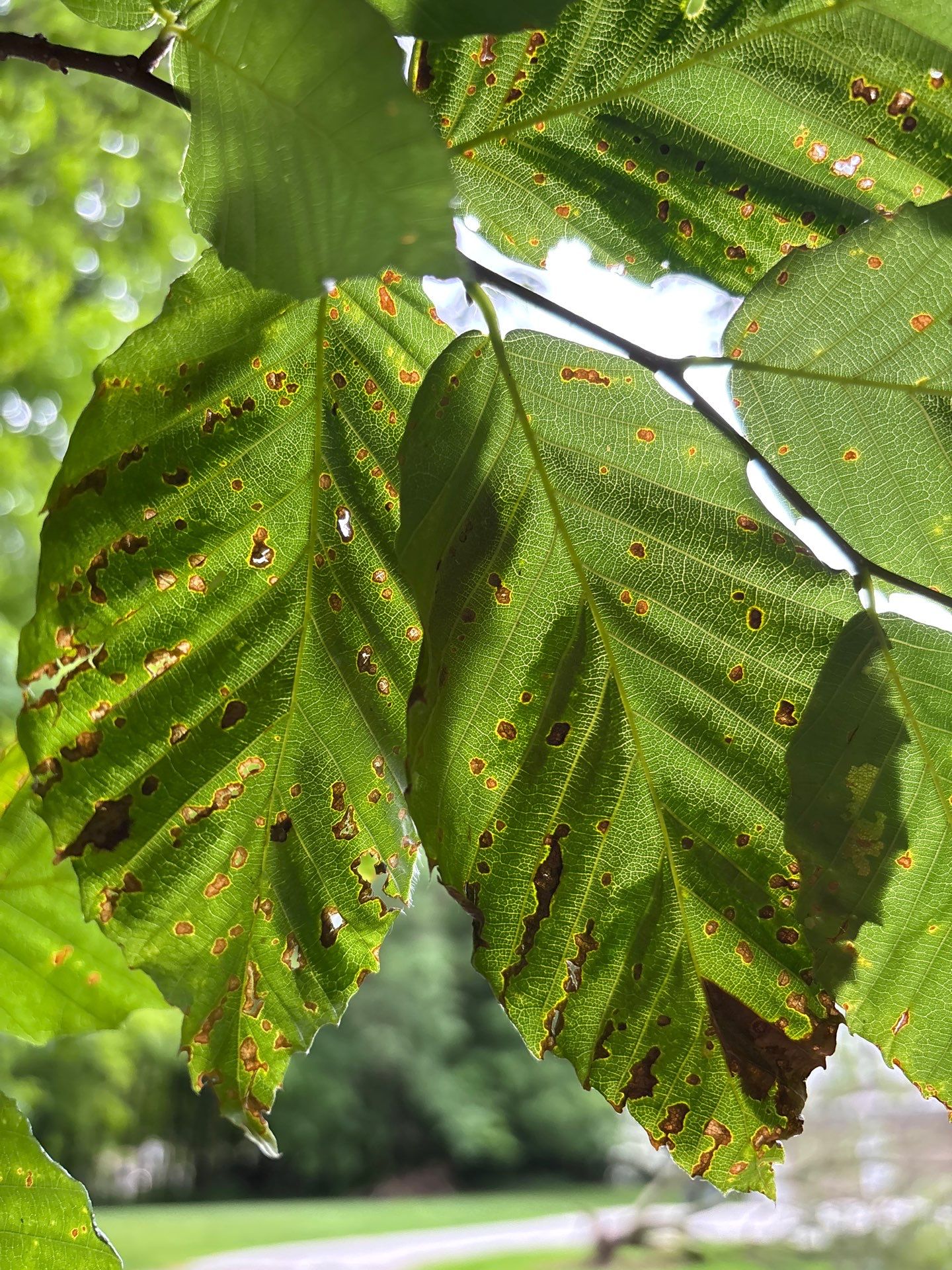
Beech Trees at Risk: What Homeowners Need to Know About Beech Leaf Disease
What Is Beech Leaf Disease?
First identified in Lake County in 2012, Beech Leaf Disease (BLD) has now been confirmed in more than a dozen states and much of Ontario. It affects both native American beech (Fagus grandifolia) and ornamental European beech (Fagus sylvatica)—trees prized for their beauty, structure, and shade. The culprit is a microscopic nematode (Litylenchus crenatae mccannii) that feeds on developing leaf buds. Infected leaves show dark banding between veins, crinkling, curling, and eventual canopy thinning. Left untreated, young trees can decline and die in just a few years. Mature beech may hang on longer, but they too will show progressive signs of stress and decline.

There’s No Cure—But There Are Treatment Options
A 2025 study in Arboriculture & Urban Forestry tested root flare injections using the fungicide thiabendazole (Arbotect 20-S). Trees treated in Northeast Ohio showed significant reductions in both nematode levels and leaf symptoms—effects that persisted across multiple growing seasons. This treatment is not a silver bullet, but it can buy valuable time for high-value trees while researchers continue to search for a cure.
For smaller beech trees (under 20 feet tall), another promising strategy is foliar application of fluopyram, a fungicide with nematicidal properties. Applied in late summer, this treatment targets nematodes on the leaf surface before they migrate into buds. According to a 2024 study in the Journal of Environmental Horticulture, this approach reduced live nematode counts by more than 90% when properly timed.
While it won’t reverse symptoms immediately, this foliar option is highly effective at protecting next spring’s leaf flush, making it ideal for ornamental or landscape beech where canopy access is easy.
Why It Matters
We’ve seen this before: Dutch elm disease. Emerald ash borer. Each one transformed our neighborhoods and forests.
Now, beech trees are under threat—and their loss would be felt deeply. These trees don’t just beautify our properties. They support birds, pollinators, mammals, and diverse understory ecosystems. In suburban yards, they provide shade, seasonal interest, and property value. Losing them means losing a foundational piece of our landscape.
What You Can Do
Know what to look for. Watch for leaves with dark stripes between veins, curling, or reduced size. Symptoms are most visible in spring and early summer.
Act early. Once symptoms appear, the tree is already compromised. Early intervention gives the best results.
Talk to a professional. Whether your tree is a towering legacy specimen or a young ornamental, let’s discuss a plan tailored to its size and value—before visible decline sets in.
Worried about your beech tree?
Let’s talk. We offer both injection and foliar options depending on the size of your tree. Reach out at [email protected] or visit treesandgardensohio.com to schedule a consultation.
